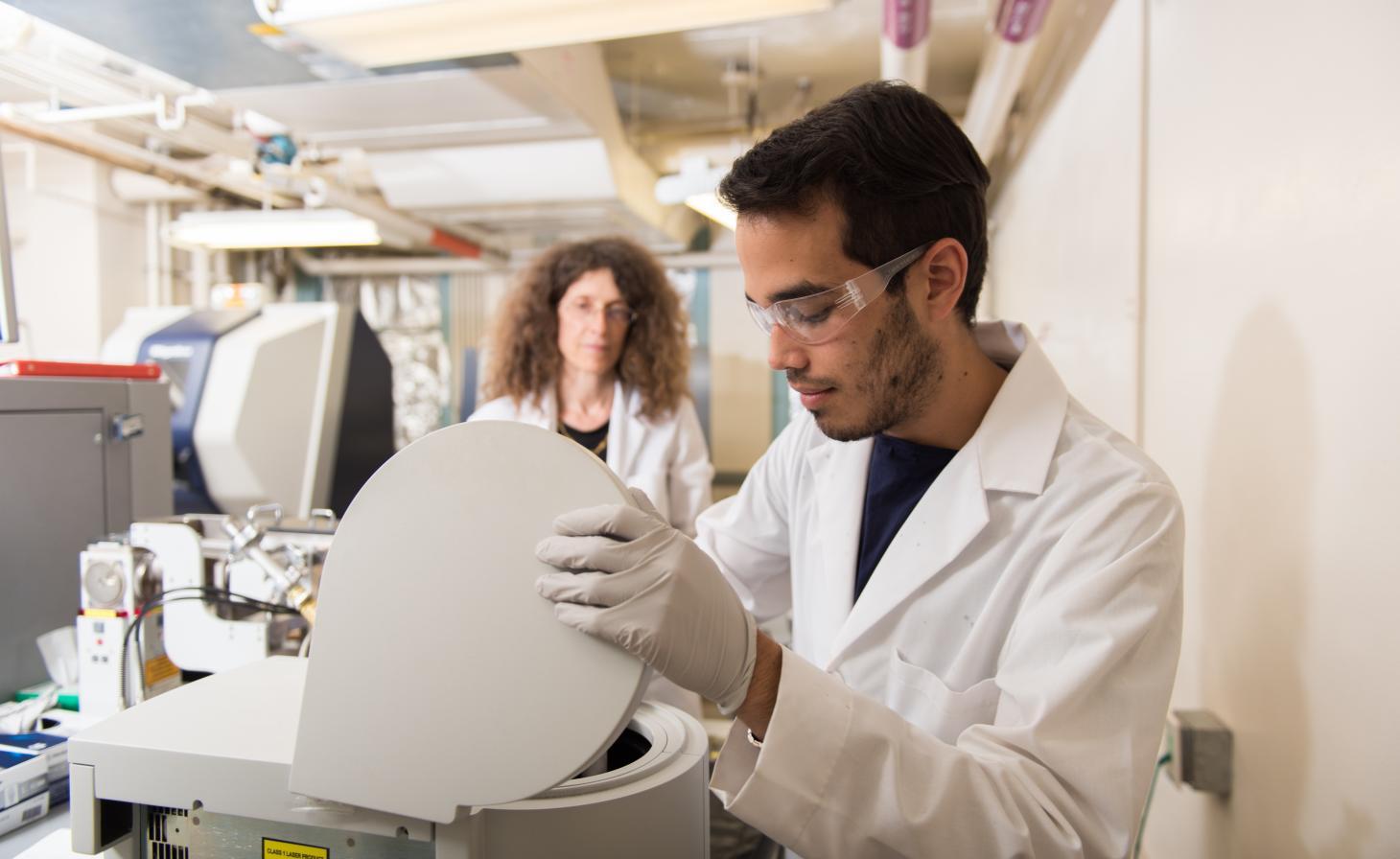Chemistry is the central bridge between the physical sciences, the life sciences and the applied sciences such as medicine and engineering. Therefore, it serves as a highly valuable complement to your science or engineering major. The chemistry minor can be fruitfully combined with a major in biology, physics, chemical, nuclear or mechanical engineering, mathematics, public health or agricultural sciences to deepen your science education and broaden your job opportunities in industry and research labs. It will also prepare you for graduate school in the physical sciences or engineering. The Chemistry minor requires 27 credits of basic and advanced courses. You will learn not only the basic principles of general chemistry, chemistry laboratory but also acquire deep expertise and knowledge through upper-division electives for advanced study to match your particular interests.
In addition to 12-15 credits of elementary chemistry courses, students can select up to a minimum of four upper-division courses of three or more credits in at least two areas of chemistry (organic, physical, analytical, inorganic, or nuclear chemistry) in addition to one laboratory course.
The chemistry minor will prepare students to integrate and apply key components of chemistry, design and execute experiments, analyze data and communicate scientific concepts effectively.
Students interested in exploring the chemistry minor should contact, chemistry minor advisor, John Terhorst (john.terhorst@oregonstate.edu).
Learning outcomes
- Core Knowledge: Students will be able to recall, integrate, and apply essential core information about the key components of Chemistry.
- Laboratory Skills: Students will demonstrate competency in basic laboratory techniques, laboratory safety, chemical synthesis, and measurement of chemical properties and phenomena.
- Communication Skills: Students will communicate ideas effectively orally and in writing.
- Synthesis and Analysis Skills: Students will demonstrate the ability to analyze data, access information and integrate information from various sources in order to solve problems.
Apply for a chemistry minor
Adding a Chemistry minor does not require the approval or a signature from the department. Please see your regular academic advisor and they can add the chemistry minor to your program on-line. OSU no longer uses the paper forms. If you have any questions on the chemistry minor, please chemistry minor advisor, John Terhorst (john.terhorst@oregonstate.edu) and include your name, OSU ID (if you have one) and email.
Curricula
The requirements for a minor in chemistry include a minimum of 27 credits of chemistry (CH) courses. These credits must include a complete General Chemistry sequence (CH 201, CH 202, CH 123 or CH 233/263) (CH 121, CH 122, CH 123). In addition, a minimum of 4 upper-division courses of 3 or more credits in at least two areas of chemistry (organic, physical, analytical, inorganic, or nuclear) and one laboratory course are required. CH 401/501/601, CH 403/503/603, CH 407/507/607, CH 410/510, CH 695, and CH 696 cannot be used to fulfill the upper-division credits; CH 130, 140 and CH 374 are terminal courses and do not count toward the minor.




